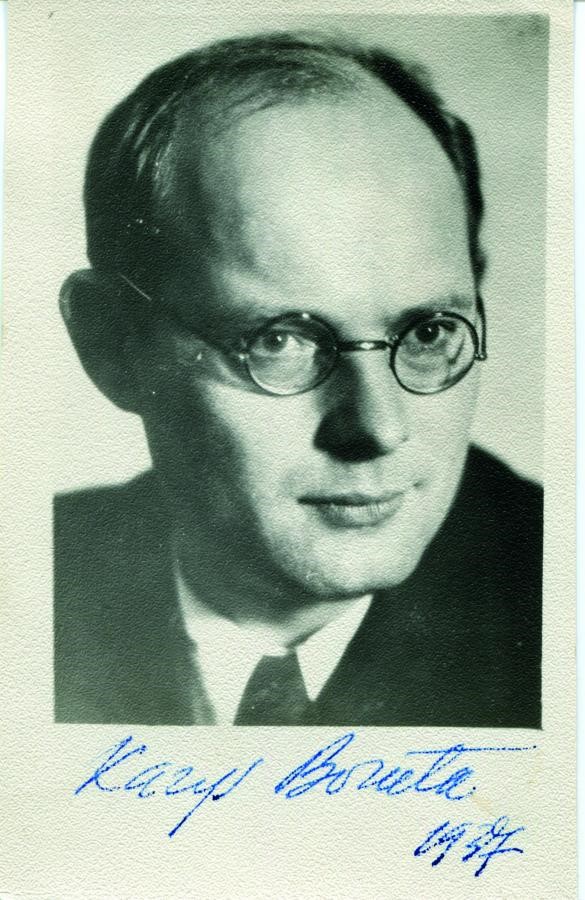The collection holds documents (manuscripts, correspondence, diaries) by the well-known Lithuanian writer, poet and translator Kazys Boruta. Boruta was not only a talented writer, he was also a social critic and activist. In 1968, his daughter Eglė Borutaitė-Makariūnienė and his third wife Elga Borutienė gave part of his personal papers to the Institute of Lithuanian Language and Literature. In 1990, the Lithuanian government reorganised it, and the Kazys Boruta collection became part of the Institute of Lithuanian Literature and Folklore.
During the interwar period, he criticised Lithuania's political regime sharply. He was close to various leftist organisations, was arrested, and even had to emigrate. At the beginning of the Soviet regime, Boruta enthusiastically welcomed it.
Afterwards, however, his relations with the Soviet regime during the Stalinist period were complicated and tense. His famous novel Baltaragio malūnas (The Mill of Baltaragis), published in 1945, was strongly criticised for its 'mysticism' and its ignorance of the Soviet reality. (All printed copies were destroyed by the government.) In 1946, Boruta was asked to sign an underground proclamation, together with other artists, disapproving of Lithuania's occupation. Although he did not sign it, he was arrested in 1946 for the counter-revolutionary crime of 'knowing but not informing' the authorities about the activities of the Lithuanian underground movement. He was sentenced to five years. But with the help of Justas Paleckis, Antanas Venclova and his second wife Jadvyga Čiurlionytė Borutienė, he was not deported from Lithuania, and was released from prison in 1949. Boruta was ignored by the regime, and had a lot of problems publishing his work. His situation started to change slowly after Stalin's death, during the period of de-Stalinisation.
During the Soviet period, the Lithuanian intelligentsia appreciated Boruta’s work for the folk themes and topics he used in his poems and novels. On the other hand, as a Lithuanian cultural activist, he was an example of the rebellious artist, who protested against different political regimes for artistic autonomy and creativity.

